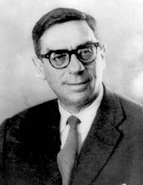

He served as director of the Faculty of Arts at the University of Lisbon (1956–58) and its Institute of Brazilian Culture. He was a member of the Lisbon Academy of Sciences, first as a corresponding member (1957) and later as a full member (1963), as well as a member of the Brazilian Academy of Letters and the Historical Institutes of Rio de Janeiro and Brasília. He also presided over the Alliance Française of Lisbon and the National Commission for the Fifth Centenary of Gil Vicente (1965) and participated in many other commissions, such as those for the Fifth Centenary of the Death of Prince Henry the Navigator (1960), the Foundation of São Paulo (1964), and the publication of Os Lusíadas (1972), among others. Among the awards he received were the Ricardo Malheiros Prize (1944) and the National Literature Prize (1965), with particular distinction given to the Montaigne International Prize from the F.V.S. Foundation of Hamburg (1974).
Nemésio’s literary oeuvre, while spanning nearly all genres, is especially notable for his poetry, which he published with relative consistency between 1915 and 1977. His poetry reveals such profound aesthetic and thematic shifts that it sometimes appears to have been written by entirely different authors. For instance, consider O bicho harmonioso [The Harmonious Creature] (1938), Nem toda a noite a vida [Not All Night Is Life] (1952), and Limite de idade [Age Limit] (1972). His narrative fiction is dominated by the novel Mau tempo no canal [Stormy Isles: An Azorean Tale] (1944), though it also includes shorter forms, such as O mistério do Paço do Milhafre [The Mystery of the Milhafre Manor] (1949). He also published a wide variety of texts with a somewhat chronicle-like nature (which generally transitioned from the press or radio broadcasts to later being collected in book form). These works range from travel literature and scattered notes to reflections on cultural or social aspects, as well as formal essays and critical approaches to literature and literary history. Additionally, his academic research resulted in significant studies, particularly on 19th-century Portuguese culture and literature. Notable among these is his extensive work on Herculano and Romantic culture, exemplified by Relações francesas do Romantismo português [French Relations of Portuguese Romanticism] (1936), as well as his studies on Brazil, particularly O Campo de São Paulo. A Companhia de Jesus e o plano português do Brasil [ The São Paulo Region : The Society of Jesus and the Portuguese Plan for Brazil ] (1954).
This work is financed by national funds through FCT - Foundation for Science and Technology, I.P, in the scope of the projects UIDB/04311/2020 and UIDP/04311/2020.
